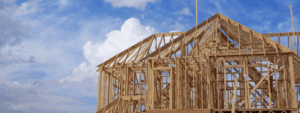As we face another dry winter and a long wildfire season ahead, Greenbelt Alliance is delving deeper into the ways that we can help our growing communities become more climate and wildfire resistant.
Greenbelt Alliance has been advocating for climate-healthy growth within existing cities and towns and the protection of our greenbelts for decades. We are now entering an era when the climate crisis makes this solution a matter of life and death.
Looking back, we saw how greenbelts protected towns as the 2019 Kincade Fire blew down from The Geysers geothermal field on the flanks of the Mayacamas Mountains in the northeast corner of Sonoma County. Both Healdsburg and the Town of Windsor were saved in large part by the green buffers adjacent to Urban Growth Boundaries where firefighters defended homes and businesses from the flames.
Scientific research on wildfire risk at the community scale (versus house or parcel) reinforces that the best way to reduce the loss of home and life is through city-centered and clustered development separated from fire-prone lands by greenbelts and agricultural lands such as the Sonoma County’s voter-protected community separators. Parks, vineyards, and even golf courses as well as creeks, ponds, and other water features can also add to wildfire safety.
Looking forward, we agree with the experts and advocates that say that the loss of homes and lives is primarily a home ignition problem, not a wildfire control problem. Focusing on forests and dead trees far from communities that are most at risk, or habitat clearance projects that have little value during wind-driven fires will only guarantee more of the same – continued catastrophic losses.
To stop the destruction of our communities by wildfire, we must focus on strategies that will work in our rapidly changing environment: reduce the flammability of existing communities and prevent new ones from being built in very high fire hazard severity zones.
We’ve learned from CALFire’s land-use division chiefs that an immediate next step is to add new measures as required in state law for reducing wildfire risk into all county and city General Plans and Local Hazard Mitigation Plans. The new regulations are far too numerous to summarize here, but Greenbelt Alliance will focus on implementing priority measures at the city and county level to make existing communities more wildfire-safe and to ensure that new development keeps people out of harm’s way.
New CALFire Fire Hazard maps due out this summer are likely to significantly expand the range of high fire severity designations across the state, making our work more essential than ever.
Moving forward, Greenbelt Alliance is consulting with experts far and wide to bolster our core mission and go beyond state law to lead the way forward on climate and wildfire resiliency.
To this end, we recently joined wildfire professionals, researchers, engineers, public agencies and academics at a national Wildland Urban Interface Resiliency workshop in San Francisco to explore where we are going and how to get there. As one of the few non-profit environmental and planning groups there, we are excited to be partnering and contributing content for the Land Use & Planning section of a final report that will be produced as an outgrowth of this workshop. We’ll let you know as soon as it is ready!
For more information about the work we’re doing in the North Bay, feel free to reach out to Regional Director, Teri Shore.
Photo: Don McCullough via Flickr




